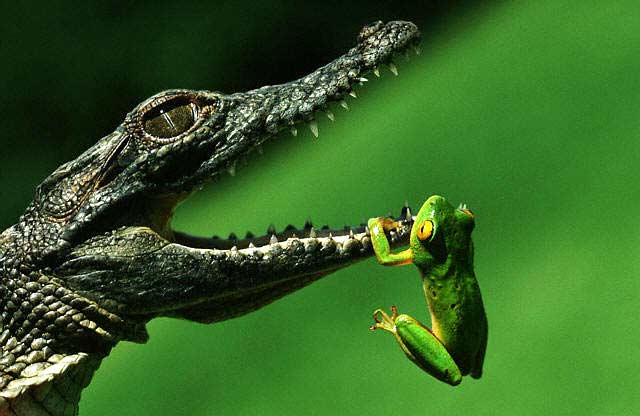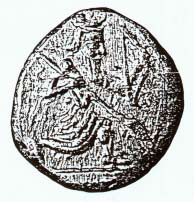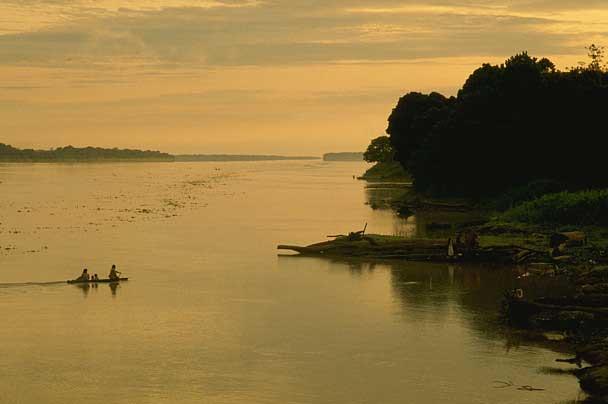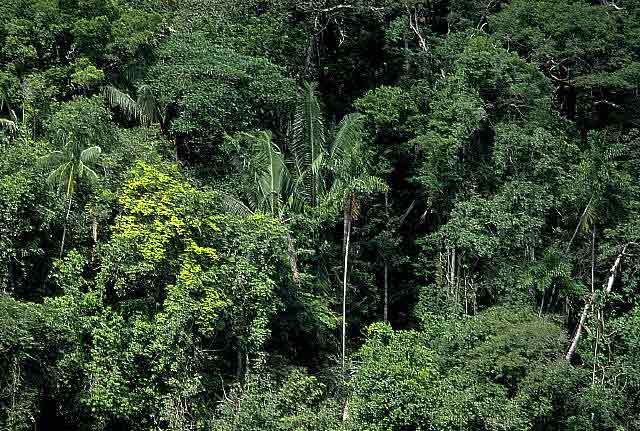
"...I'm sorry to say that,
owing to their misreading of the Bible,
thousands of people still believe...
the world was created around 4000 BC."
- Arthur C. Clark
Most, if
not nearly all high school teachers and college professors walk
and talk the path of dogmatic history because that is
the way they have been trained (taught) to believe and so that's
the way it is. Consequently, these so called experts pass on
the biased errors from generation to generation without thinking.
Their entire paradigm is being passed on without analysis.
Why? Because I believe most of them, as well as most of the general population, would rather continue to believe the way it has always been taught and believed rather than face the 'discomfort of rethinking,' critically questioning their own paradigm. Are they afraid? or just lazy? Who knows, but if you do NOT adjust your thinking "upward" and grow mentally and emotionally as you learn more and more about the world, life, and yourself, you are doomed to live a life with the enemy of intelligence - ignorance.
In 1984, the lost city of Ingrejil was discovered in the northern Ingrejil mountains of Bahia state. Before then, it was thought, believed and taught that the Amazon region had no ancient past. This discovery shook Brazilian archaeology to its very foundation.
Since the 16th century, adventurers have been obsessed with finding
gold and silver mines in Brazil, particularly the Lost Mine of Muribeca.
Roberio Dias owned a rich silver mine somewhere in the interior of Brazil, worked by Indians and rumored to be thousands of years old.
Roberio Dias' father was a half-Indian named, Muribeca. He had inherited the mine from his father, a Portuguese man and the survivor of a shipwreck who lived with a friendly Indian tribe and who later married an Indian woman. Although Dias was very wealthy, he was nevertheless a commoner, and worse, a mestizo - a name given to someone whose blood is part Indian.
One thing Dias always wanted in life was a title, a certificate of nobility. And so he travelled to Madrid and proposed a deal to the King (of Spain and Portugal at the time) Dom Pedro II. He offered the King all his riches from his splendid mines in return for the title of 'Marquis of the Mines.'
Dom Pedro II refused. Instead, Dias' certificate was sealed and ordered to be given to Dias when the location of the mines were disclosed. But enroute to the mines, Dias convinced the ship's captain to open the orders before they reached Bahia. Much to his surprise and dismay, Dias learned he was not to be the Marquis of the Mines after all. Contrary to what the King had promised, the sealed orders declared that the King had dispersed a military commission to the area with Dias as 'captain.' Understandably, Dias refused to give up the location of the mines.
Dias was imprisoned in a dungeon in Salvador for two years. But still, he refused to talk. Eventually, he was allowed to buy his freedom, and in 1622 he died. Fortunately, the secret location of the mines went to his grave with him.
Many expeditions were launched to find these mines, and most never returned.
e Geographico Brasileriro
Rio de Janerio
July 21, 1865
This manuscript
is known as "Document
512". It is the "historical account of a large, hidden,
and very ancient city, without inhabitants, discovered in the
year 1753."
The manuscript was translated by Mrs. Richard Burton from old, rude Portuguese explorers, into English. The manuscript was badly decayed and parts were completely illegible, but the essence of the story was intact.
The story begins in 1743, when Francisco Raposo led an expedition into the jungles of the Amazon basin in search of clues to the lost Muribeca mines. Years later, they happened upon a mountain range of glistening gemstones. (They were actually wet quartz crystals glistening in the setting sun from a recent rain.) Several days later, they reached the mountains and followed the bed of a road? up to the peaks where they viewed what appeared to be a stone city approximately four miles away.
When the expedition arrived at the city, it appeared as if a great earthquake had ravaged the place. Tumbled columns and buildings were scattered everywhere.
The explorers entered the city through three arches of great height. On the middle and largest arch were inscriptions, but it was too high to be copied. The main street was lined with houses, their interiors very dark (no windows) and completely empty. Due to their vaulted ceilings, the explorers' voices echoed, casting an uneasy eerieness to the place.
The explorers ventured down the long street to a square. In the middle of the square was a column of black stone of extraordinary height and size. Upon it was a statue of a man with his left hand on his hip and his right pointing with his forefinger to the North Pole. In each corner of the square was an obelisk, imitations of those used by the Romans - some were badly damaged as if they had been struck by lightning (thunderbolts).
On the right of the square was a superb building believed to be a palace, perhaps the principal house of the Lord of the Land. Above the door (entrance) was the figure of a half-naked, clean-shaven young man crowned with laurel. Beneath the shield of the figure were some inscriptions spoiled by the hands of time. However, the following characters below were discerned.

On the opposite side of the square was what appeared to be a temple in ruins. It's ruined walls had inlaid engravings of figures and pictures (frescos?) of superior workmanship.
In front of the square was a broad river with spacious banks. For three days they explored down the river, eventually coming to a waterfall. Below the waterfall the river spread out like a great ocean, full of peninsulas covered with green shrubs and trees and a wide assortment of game and other animals.
To the east of the falls they discovered many "deep cuttings and frightful excavations." Their depths were never discovered because the longest rope they had would not reach its bottom. Around the area they found silver nails, "as if they were drawn from the mines and left at the moment."
These caverns appeared to be ancient mine shafts, or possible tombs. One of them had its entrance blocked by an enormous stone slab with the following inscription:

On the
portico (porch) of the temple they saw other inscriptions, such
as this:

"...About
a cannon shot from the stone village, was a building as it might
be of a country-house, with a front 250 paces long." The
explorers "ascended the staircase of many colored stones
which opened into an immense saloon, and afterward into 15 small
houses, each with a door opening into the said saloon..."
The size
and and grandeur of the ruins portrayed a stone city of great
importance at one time. But now its only occupants were swallows, bats,
rats and foxes.
Who had
lived here? and why did they leave this opulent place?

Inside one of the houses, Joao Antonio (the only person mentioned
in the document) found a large gold coin. On one side was an
image of a figure on his knees, and on the other side a bow,
crown and an arrow.
Rene Chabbert, who studied Colonel Fawcett's city for years, claims there is only one gold coin that fits this description - the gold Daric. The gold Daric depicts King Darius of Persia (521-486 BC) as an archer kneeling with a bow, quiver and spear.
If this
is the coin in question, how in the world did it find its way
here?
There is only one plausible answer: The coin was brought here by traders? from the Mediterranean region during a time when this majestic stone city was thriving with human (mining?) activity.
From this point, a smaller party left the main expedition after
spotting two white men with long, dark hair and beards (and dressed
in European clothing!) paddling a canoe at the mouth of a large
bay formed by the river. They fired a shot in an attempt to capture
their attention but apparently it went unnoticed and the canoe vanished.

After several months of hard travel back eastward, they arrived at a small outpost on the San Francisco River. From there they made it back to Salvador with this documented account of their adventure, which was sent to the Viceroy, Don Luiz Peregrino de Carvalho Menezes de Athayde who apparently did nothing with it.
Document 512 closed with the following:
"This intelligence I send to your Excellency from the Desert of Bahia, and from the rivers Para-oaqu (Paraguassu) and Una. We have resolved not to communicate it to any person, as we think whole towns and villages would be deserted; but I impart to your Excellency tidings of the mines which we have discovered in remembrance of the much that I owe you.
"Supposing that, of our company, one has gone forth under a different understanding, I beg of your Excellency to drop these miseries, and to come and utilize these riches, and employ industry, and bribe this Indian to lose himself and conduct your Excellency to these treasures..." This is where the document terminates, the final paragraph was to decayed to decipher.
Source: Lost
Cities & Ancient Mysteries of South America
by David Hatcher Childress
So, what do we make of this rare document? It definitely flirts
with a great discovery of an ancient lost city, underground mines
and hidden treasure! Was this the city Colonel Fawcett lost his life
in search of?
Should we believe the explorers' story? or discount it as a hoax?
What happened to Raposo and the other members of his expedition? Nobody knows. Supposedly, none of them were ever seen or heard from again. Did they keep their 'little' secret to themselves and live the rest of their lives in disguise? Or did they suffer the same fate so many others suffered before and after them?
Hmmm, is it me, or is there something about this tantilizing part of the world that lures you into its mysterious secret interior then prevents you from ever leaving...

Karl Brugger, a German journalist,
met Tatuna
Nara, prince
of Akakor, in a backstreet tavern. Friends thought Brugger should hear
Natunca Nara's tale about the secret city of Akakor - an ancient city
located in the jungle near the border of Peru and Brazil.
SOURCE:
Lost Cities & Ancient Mysteries of South America
by David Richard Childress
Color images purchased from corbis.com
|
|
|